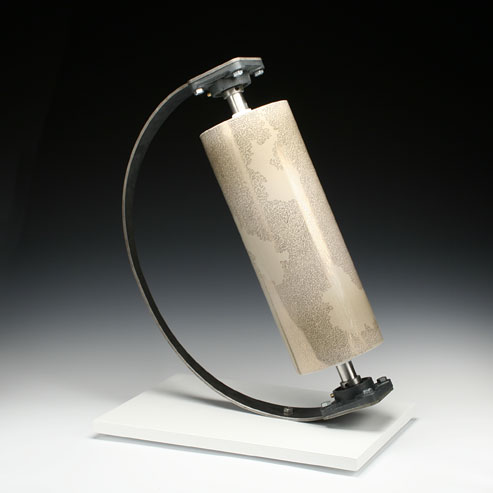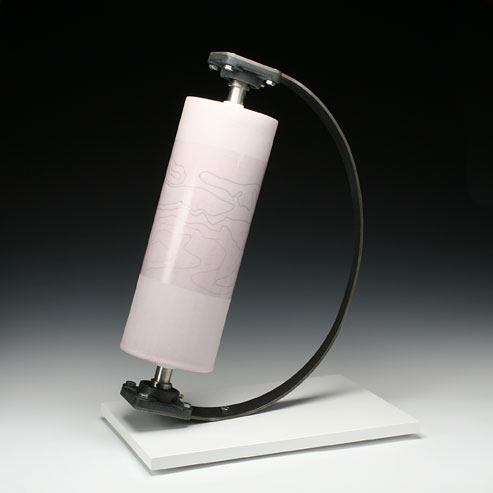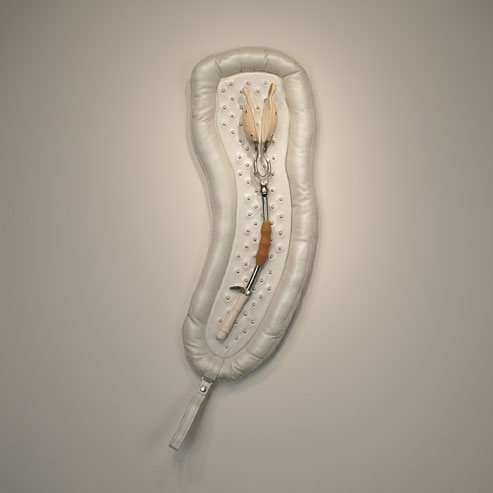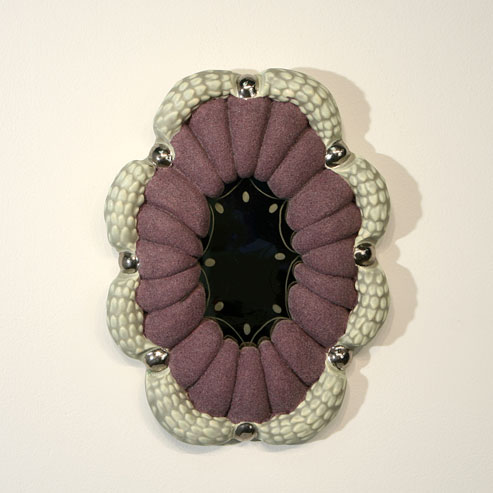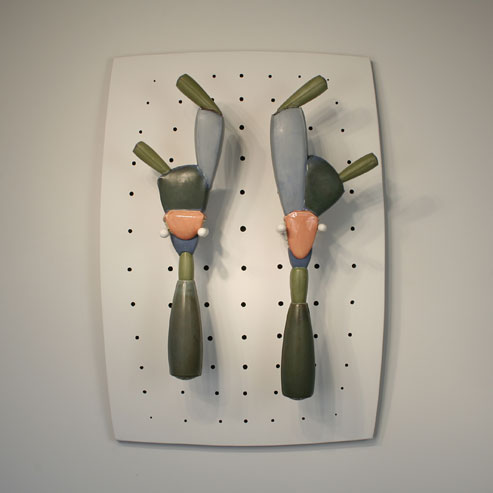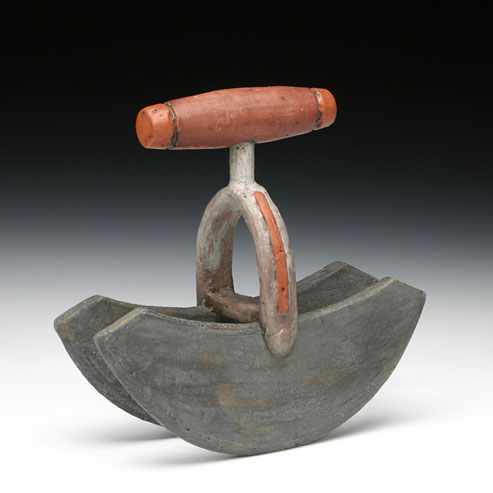Curatorial Statement
“Y=f(x)?â€
Exhibition Statement
“What the heck does algebra have to do with art??†— you may be wondering. Last year, fellow Red Lodge Clay Center resident artist — Frank Saliani — and I (Stephanie Lanter), surrounded by beautiful utilitarian pottery here in the gallery, came up with an exhibition idea. We wanted to gather together works by fellow sculptors that, rather than actually being functional, like a plate or a cup, illustrated a unique concept of function. All of the clay and mixed media works in the show reference something functional – a hammer, a globe, a purse, a bonnet, or a tool for domestic production or personal improvement. Their dysfunctionalities, however, (by being sculptural objects) raise questions about “use†and “users.†Our title is somewhat of a pun. We are wondering why (y) the functions (f’s) of certain objects (x’s) are what they are. We consider this on philosophical, sociological, anthropological, psychological and personal levels. We are not trying to graph out specifics, as in junior high math class, but bring a new perspective to the traditional world of ceramics.
Y=f(x) also denotes shifting relationships. People form things; things form people. In assembling these artists and analyzing their work, a surprisingly clear division between feminine and masculine approaches to this concept appeared. The male perspective seems broader and less specific than that of the female. Frank Saliani, John Williams and Joseph Pintz focus outward, while Stephanie Lanter, Colleen Toledano, and Teresa Shannon delve inward into personal as opposed to collective psyches.
Saliani’s composite tools investigate the formal nature of thought. His cast set of forms demonstrate the necessary compartmentalization of knowledge. Historic wrenches and hammers represent the constructive/destructive aspects of metaphysics and hybridize the “natural†and “manmade.†Williams considers kinetic and narrative function through the mapping and globes. His recorded and imagined landscapes on industrial equipment portray the distortion of information and suggest consequences. Looking back rather than ahead, Pintz’s domestic implements temper nostalgia with the mysterious formality of the obsolete. Mundane kitchen and farming apparatus become iconic, signifying the basic human needs they fulfill.
Lanter’s mutation of oral surrogates into ironic “toys†explore adult drives for pleasure and security. Contextualizing her symbols with crocheted fibers and garments suggests intimate, compulsive relationships. Ambivalence also drives the “do it yourself†devices for beauty enhancement invented by Toledano. Delicately bizarre conglomerations of porcelain, leather, pewter and foam embody the conflicts between the industry of fashion and a woman’s self esteem: they both oppress and liberate. Shannon’s “Pretty Silly†mirrors and whiskey purses are self-consciously kitschy. Roccoco-esque and flocked, her pieces bring the sensual, experiential clichés of pottery to a new level.
Connecting “Y=f(x)†works is the notion of control. Does it exist in the user or the used? We objectify vague, complex issues to encourage dialogue about the power of things we often take for granted.
Stephanie Lanter 2008


